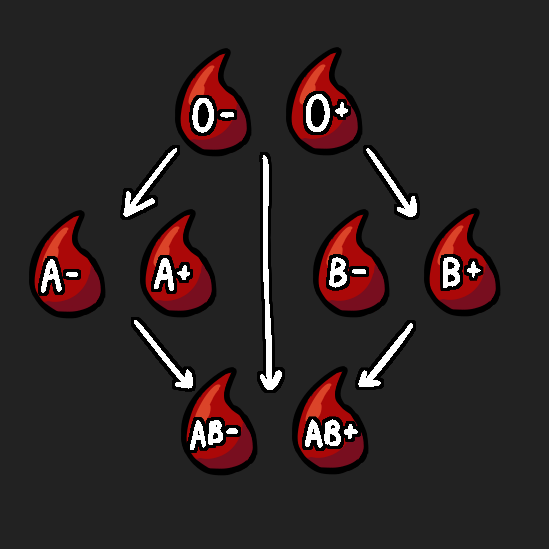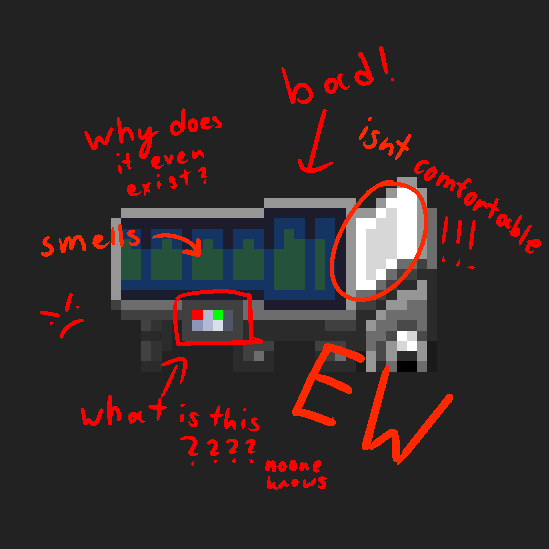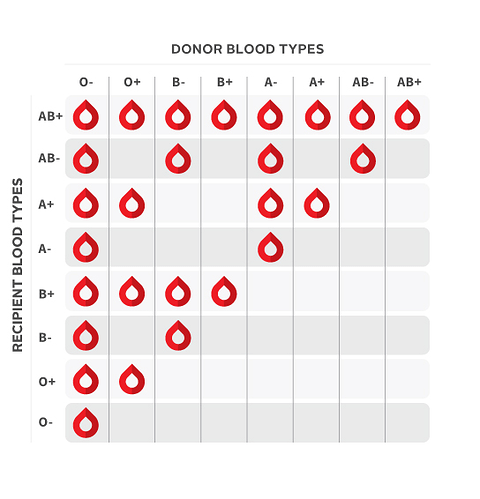MedGuide - Part 1: The Crash Course
This guide is supposed to give a player that is stating playing med and has a general idea of whats going on, but needs a more coherent picture of what to do in med.
I made this guide in like 5 hours while not being able to sleep, so if i missed something/made mistakes please comment.
Contents:
What is a spessman?
- The basic damages
- Fleshy Insides
- The Body Juice
How do we fix a spessman?
- Are they still moving?
- Reviving and bringing back to life
- Dealing with those pesky chems
Stasis Slander
What is a spessman?
I want to start my guide out with explaining what exactly you will be dealing with when you select medical doctor as your job - humans, mostly, and how they work.I will start broad. For the person to be alive, they need three criterea to be met:
-
Their health (the sum of brute, burn, toxin and oxygen damage) needs to be above -100% which is the same as having less than 200 damage.
-
Their brain must be functioning.
-
Their blood needs to be at least above 20%.
If any of these criterea arent met, the person will die. Seems simple so far, right? So lets get deeper.
The basic damages
Basic four types of damage is the reason for the majority of deaths. When person gets 100 damage, they will be put in softcrit, and at 150 damage they will enter hardcrit. In crit people slowly suffocate. The different types of damages can be done either be by being beaten to death by a blunt force, burnt alive, poisoned, suffocated or all of that at once. And here where causes of the deaths branch out.
-
Brute and burn are fairly easy, you can use sutures
 and regen mesh
and regen mesh accordingly, or healing chems. These two are the types of damages that are assigned to one of the bodyparts, unlike toxin and oxygen damage that persists in the body. If its a dead body, you will have to do wound tending surgery, or use synthflesh if you have that luxury.
accordingly, or healing chems. These two are the types of damages that are assigned to one of the bodyparts, unlike toxin and oxygen damage that persists in the body. If its a dead body, you will have to do wound tending surgery, or use synthflesh if you have that luxury. -
Toxins are the trickiest type of damage, and theres almost no way to fix it in a corpse, since it doesnt process chemicals. Thankfully you dont have to, because defibbing requirements ignore the toxin damage. In a living corpse you need either multiver, pentetic acid, seiver or another anti-tox to heal it.
-
Oxygen damage, or suffocation damage, slowly heals itself if the person isnt in crit and can be treated by CPR’ing the person when they are in crit. Barely matters for the corpses, can be ignored before defibbing like toxin damage.
Fleshy Insides
Your usual human might look just like five limbs (head, two legs and two arms), attached to a torso, but quickly you will find out that its a bit deeper than that. To explain it i made an artistic representation of the human's insides:
As you can see, average human has 9 organs. Each of them has their own varying levels of importance and difficulty of repair, but one universal thing they have among them is that in a living body the organs slowly heal and when in a corpse, the organs will begin to slowly rot. All of organs work unless they are non-functional, even severely damaged organs will eventually fully heal themselfs:
-
Brain
 is the most important organ that contains the soul (player) in it. Without it the body cannot live and is practically worthless. But it can be easily fixed out of non-functional state with Brain Surgery, and healed with mannitol from damaged state. Its located in the head
is the most important organ that contains the soul (player) in it. Without it the body cannot live and is practically worthless. But it can be easily fixed out of non-functional state with Brain Surgery, and healed with mannitol from damaged state. Its located in the head  .
. -
Heart
 is the second most important organ, because its the first one to rot. Thankfully, it can be easily repaired with Coronary Bypass surgery (only one time per heart), or Muscle Membrane if you are feeling funky. Its located in the chest
is the second most important organ, because its the first one to rot. Thankfully, it can be easily repaired with Coronary Bypass surgery (only one time per heart), or Muscle Membrane if you are feeling funky. Its located in the chest .
. -
Lungs
 are responsible for breathing, and without them working properly it will be harder for people to breathe (heal oxygen damage on their own) and if they are non-functional, the person will slowly but surely suffocate. They are usually replaced, but can be fixed with Lobectomy just like heart. They are located in the chest
are responsible for breathing, and without them working properly it will be harder for people to breathe (heal oxygen damage on their own) and if they are non-functional, the person will slowly but surely suffocate. They are usually replaced, but can be fixed with Lobectomy just like heart. They are located in the chest .
. -
Liver
 processes chemicals when person is alive, and when it goes non-functional it will slowly deal toxin damage. Unlike every other organ, it cannot be fixed with surgery, because Hepatectomy works only on damaged but not failed livers. Go figure why. Its located in the chest
processes chemicals when person is alive, and when it goes non-functional it will slowly deal toxin damage. Unlike every other organ, it cannot be fixed with surgery, because Hepatectomy works only on damaged but not failed livers. Go figure why. Its located in the chest .
. -
Stomach
 is the organ that processes ingested reagents and sends them into the bloodstream. When it fails, the person will just not be able to get the ingested reagents into their bloodstream. Is the only non-vital organ in the chest. Can be fixed with Gastrectomy like heart and lungs. Its located in the chest
is the organ that processes ingested reagents and sends them into the bloodstream. When it fails, the person will just not be able to get the ingested reagents into their bloodstream. Is the only non-vital organ in the chest. Can be fixed with Gastrectomy like heart and lungs. Its located in the chest .
. -
Appendix
 is an organ that does nothing, unless you get appendicitus, and then you will have to surgically remove it. When inflamed/non-functional, does significant toxin damage. Its located in the groin
is an organ that does nothing, unless you get appendicitus, and then you will have to surgically remove it. When inflamed/non-functional, does significant toxin damage. Its located in the groin  .
. -
Eyes
 give you the ability to see. Arent vital, but without them working the prerson is blind. Can be fixed either with Eye Surgery or Oculine. They are located in the eyes
give you the ability to see. Arent vital, but without them working the prerson is blind. Can be fixed either with Eye Surgery or Oculine. They are located in the eyes .
. -
Ears
 give you the ablity to hear. Just like eyes, arent vital. Can be fixed with Inacusiate. They are located in the head
give you the ablity to hear. Just like eyes, arent vital. Can be fixed with Inacusiate. They are located in the head .
. -
Tongue
 gives you the ability to properly speak. Its an exception as its the only organ that doesnt have health and cannot rot. Its located in the mouth
gives you the ability to properly speak. Its an exception as its the only organ that doesnt have health and cannot rot. Its located in the mouth .
.
To keep organs from rotting, you can either use 1u of formaldehyde in the corpse’s bloodstream, or keep it on a stasis bed.
The Body Juice
Everyone has around 575 units of blood in them, but its really easy to loose it by getting bleeding wounds. The more you loose, the more you will start suffocating. At 20% you will die no matter of actual oxygen damage. If you need to quickly close a bleeding wound, you can use an epipen, since it has a chemical that clogs up bleeding, otherwise scan the person with the health analyzer to see the proper treatment for the wound. But how do you replenish the lost blood? Theres two ways:-
First, you can use blood bags from blood crates with IV drips. But be careful, because putting in wrong type of blood into a person will quickly fill them with toxins. From my experience, noone actually knows how the blood type system works, so here is a quick chart:
This makes O- type the best donor and AB+ type the best receiver. One thing to keep in mind: you can transfer all types with - to - and +, but you cannot transfer + types to - types, only other + types -
Second way is to boost the body’s blood production. The living body constantly produces some amount of blood, but its not enough to replenish big amounts. You can give the patient Iron to just boost the blood production, or you can give them saline-glucose solution. Not only does it boost the body’s blood production rate, it also gives the body a temporary amount of blood equal to amount of units of saline-glucose in the bloodstream.
How do we fix a spessman?
Now that you know how everything works, i can get started with how you will go about fixing everything. But first you need to get your basic gear which should consist of:![]()
![]()
![]()
![]()
![]()
![]()
![]() - a full set of surgical tools
- a full set of surgical tools
health analyzer![]() , and a health scanner HUD
, and a health scanner HUD![]() . Theres two main types of patients you will get: dead and alive. So I will explain how I begin working on each one.
. Theres two main types of patients you will get: dead and alive. So I will explain how I begin working on each one.
Are they still moving?
If the patient comes in and the HUD shows that they are still alive, quickly check if their health is getting worse. Do it by first scanning them and checking their general health for heart attacks, failed organs, wounds or low blood level. Then scan their chemical contents for any harmful chemicals that might be doing damage to them. Only after you completly understand your patients status, you should proceed to fixing them with according haste. Otherwise you might start healing only a symptom, without fixing the actual cause of the problem (like doing CPR to a person with failed lungs).Now if they arent alive, you should still hurry. First, just like before, check their general health and scan their chemical contents to understand whats wrong with them, but now you also want to check if they have formaldehyde in their bloodstream, and if they dont - quickly apply a patch of 1u or epipen them (epipens have formal). Then you can proceed to fixing them.
Reviving and bringing back to life
To revive people you need to first make sure you can revive them. To defib a person you need to have the defib either on your back, or mounted on a wall. But also the patient:-
Needs to haveless than 180 of brute and burn combined.
-
Needs to have a working brain
 .
. -
Needs to have a working heart
 .
. -
Needs to not be a husk
 - you can unhusk people with 100u of syntflesh after they have below 50 burn, or with 5u Rezadone pills.
- you can unhusk people with 100u of syntflesh after they have below 50 burn, or with 5u Rezadone pills. -
Should have all their vital organs working, including the appendix (or it can be removed).
-
Should have a blood level above 80%.
-
Should have bloodstream without any harmful chems.
-
Should have no wounds.
After you defib a patient, they will be set to 150 damage, or -50% health, getting oxygen damage if they arent damaged enough, so you will have to CPR them right away.
Dealing with those pesky chems
Theres gonna be many cases where patients will come in with a lot of bad chems in their bloodstream. Be that an assistant who drank too much, smoked too much, or hang out in maintenance too much and got antagg’ed. Easiest way to purge small amount of chems is with multiver. But if the amount of units reaches three digit numbers, you will have to resort to blood filter surgery which requires a blood filter![]() .
.
Stasis Slander
I will be honest here, half of the reason i made this guide is to rant about stasis beds and why i prefer operating tables. And i swear to god I will.
So why is it bad, you ask? It has so many good uses, it can put people into stasis, that prevents bleeding, organ rot and suffocation. And thats exactly why its such a newbie trap. When people start playing MD, they always start out working on stasis beds, because of their accessability and that they hold your hand and remove the time limit that otherwise exists on an operating table. But eventually people get used enough to surgery that that time limit isnt a problem for them, but they keep using stasis because they are used to it. 10% speed downgrade might not look like much, but with corpses with a lot of damage it plays a significant role.
Secondly, they dont link up to operating computers that have better surgeries. People stay on stasis and do their work at a snail’s pace not even using the available experimental surgeries.
Lastly, and in my opinion most importantly, stasis beds are in the public lobby. The lobby has people that come and go, and I constantly see doctors undress patients right on the stasis, not caring one bit for their belongings, even if its a member of security or command. PLEASE dont be a doctor like that. Your job isnt just to revive patients, but also to look after their belongings while they are in your care.
In conclusion, stasis beds have their uses, and its completly fine to use them while you are learning, but currently they are overused and because of that they are lowering the overall efficiency of medical, and you should start trying to stop using them often than you need to as soon as you can.
Thank you for reading, like and subscribe, part two is gonna come out soon-ish enough, and will be much more in-depth, i just wanted to get the crash course out of the way.








